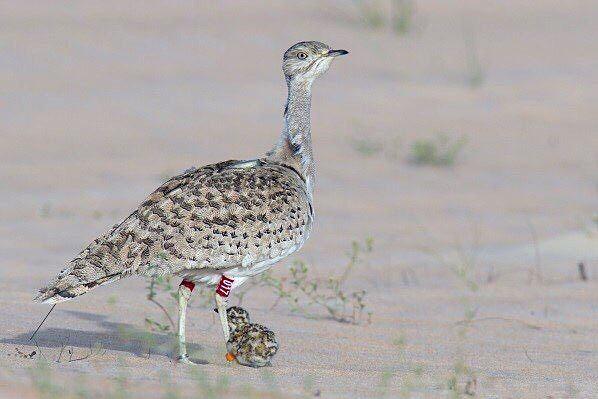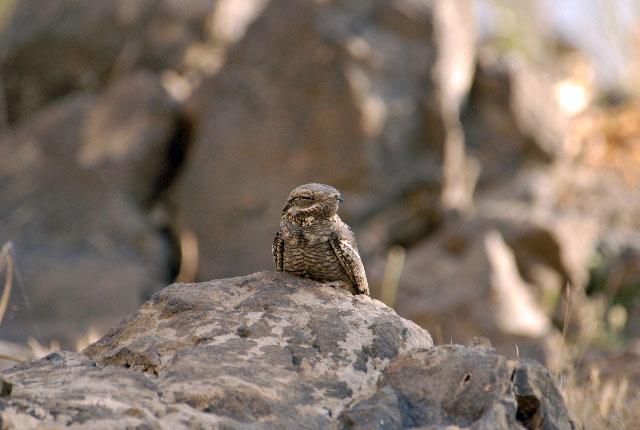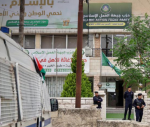You are here
Second batch of rare houbara bird to be reintroduced in Jordan in February
By Hana Namrouqa - Jan 15,2018 - Last updated at Jan 15,2018

The houbara bustard bird was last recorded in Jordan in the 1990s due to the destruction of its habitat and hunting (Photo courtesy of the International Fund for Houbara Conservation Facebook page)
AMMAN – A new batch of the houbara bustard, a rare desert bird that has been extinct in Jordan until recently, will be released back to its natural habitat under an ongoing programme to reintroduce the bird to the Kingdom, a conservationist said on Monday.
The houbara bustard, recognised by nature conservationists as “an icon of the Arabian desert”, will be released in February under the second phase of a programme started in 2014 under a partnership between the Royal Society for the Conservation of Nature (RSCN) and the Abu Dhabi-based International Fund for Houbara Conservation (IFHC).
The RSCN and the IFHC on Sunday signed the agreement of the programme's second phase, after field surveys proved the success of the first phase with the apparition of nests and chicks, RSCN Director General Yehya Khaled said.
"The new batch of birds will be released under the second phase in February in the historical habitat of the houbara, including Wadi Araba, the eastern and northeastern desert," Khaled told The Jordan Times.
The second phase will last until 2022, Khaled said, noting that the society will release batches every year.
The IFHC will be transferring the birds to Jordan from breeding centres located abroad, according to the RSCN official.
The houbara bustard reintroduction programme started in Jordan as an initiative of Sheikh Mohammed Bin Zayed Al Nahyan, crown prince of Abu Dhabi and deputy supreme commander of the UAE armed forces, according to the RSCN, which said that the bird was last recorded in Jordan in the 1990s due to the destruction of its habitat and high levels of hunting.
A total of 1,300 birds has been released in Jordan between 2014 and 2017, according to the society, which reported sightings of houbara nests in the east of the country, nest and chicks in Wadi Araba and nesting in the Wadi Rum area.
The society said that discovering nests and chicks of the houbara is an indication that the reintroduction programme has succeeded.
Khaled indicated that there is still a need for a breeding centre for the houbara bustard in Jordan, but noted that setting up such a centre necessitates large amounts of investment.
He underlined that as a part of the programme, and to ensure the success of the reintroduction process, the RSCN is working with local communities living near areas where the birds were released to raise their awareness about the bird and its critical status.
The RSCN said it will support the socio-economic development of communities near birds' release sites, and establish income-generating projects or provide absent basic services.
Furthermore, the society will step up inspection of hunting activities in places where the bird is released, according to Khaled, who noted that contrary to the first phase which was a trial, the second phase aims at increasing the survival and adaptation rate of the bird.
The International Union for the Conservation of Nature (IUCN) listed the houbara on its Red List of Threatened Species as “vulnerable”. In its explanation for categorising the bird as vulnerable, the IUCN said that the species is subject to considerable overexploitation and declines in its total population have been estimated in large proportions.
Related Articles
AMMAN — Jordan is poised to host its first falconry training centre at the newly-designated Burqu Nature Reserve in the Kingdom’s eastern de
AMMAN — Two decades after the houbara bustard became extinct in Jordan, nests and chicks of the rare desert bird are now present in the sout
AMMAN — A Nubian Nightjar bird was spotted late last month nesting for the first time in Fifa Nature Reserve (FNR), the Royal Society for th


















